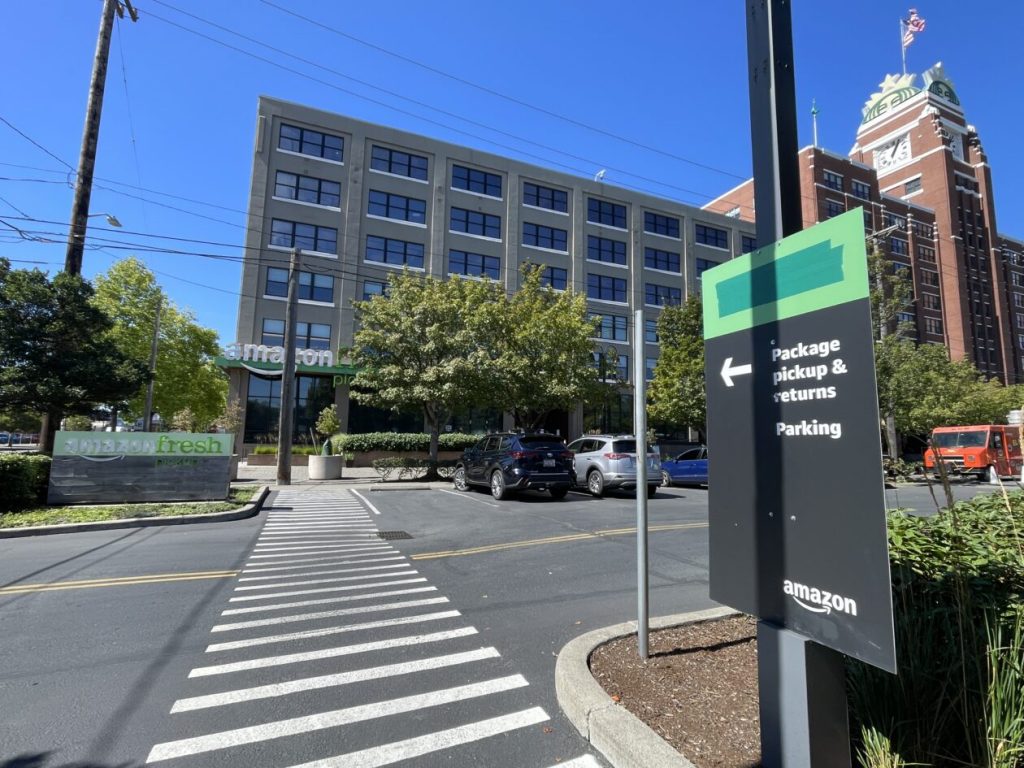Amazon recently closed its Amazon Fresh grocery pickup location and returns center in Seattle. The returns center shut down in early July, with signs at the door directing customers to the nearest Amazon returns location at a Whole Foods Market store in West Seattle. Amazon still has several return centers across Seattle, including at Whole Foods locations, Amazon Fresh and Amazon Go stores, Amazon lockers, the UPS Store, and other retailers like Staples and Petco. The company has over 8,000 return drop-off locations nationwide, with most customers having at least one within a 5-mile radius.
The Fresh Pickup location was part of Amazon’s broader efforts to enter the grocery market and allowed customers to pick up their groceries conveniently. Amazon only had two such locations, including one in Seattle’s Ballard neighborhood that closed earlier this year. The Ballard location also served as a returns center. Amazon has been reducing its physical real estate holdings in recent years, including closing all Amazon 4-star, Books, and Pop-Up stores. The company expects to save $1.3 billion in the coming years through various cost-cutting measures related to its real estate portfolio.
Despite pausing the expansion of Amazon Fresh stores in 2022, Amazon still plans to open new locations this year, with a focus on redesigned stores offering an expanded selection. Earlier this year, the company closed a smaller Fresh grocery store in Seattle’s Capitol Hill neighborhood as part of its strategic shift in the grocery business. Amazon’s closure of the returns center in Seattle adds to its ongoing efforts to streamline its physical presence and focus on more profitable ventures.
Amazon’s move to close its returns center in Seattle comes amid a broader trend in the retail industry towards online shopping and e-commerce. With more customers opting to return items via mail instead of in-store, companies like Amazon are reevaluating the necessity of physical return centers. Amazon’s decision to direct customers to alternative return locations, such as Whole Foods stores, reflects this shift in customer behavior and preferences. The company continues to adapt to changing consumer habits in order to stay competitive in the rapidly evolving retail landscape.
The closure of Amazon’s returns center in Seattle is part of the company’s broader restructuring and cost-cutting efforts. By consolidating its physical footprint and focusing on more profitable ventures, Amazon aims to improve its overall financial performance and better align its business operations with changing market dynamics. The closure of the returns center in Seattle is just one example of Amazon’s ongoing efforts to optimize its operations and adapt to shifting consumer preferences in the retail industry. Despite these changes, Amazon remains a dominant force in the e-commerce sector, with its vast network of facilities and delivery options providing convenience and value to customers across the country.
Moving forward, Amazon will likely continue to assess and adjust its physical presence and operational strategy to stay competitive in a rapidly changing retail landscape. The closure of the returns center in Seattle is a reflection of Amazon’s commitment to efficiency, cost-effectiveness, and customer satisfaction. By focusing on key areas of growth and profitability, Amazon is positioning itself for long-term success in the competitive e-commerce market. The closure of the returns center in Seattle is just one example of how Amazon is adapting to new challenges and opportunities in the retail industry, while maintaining its position as a leader in online shopping and delivery services.


